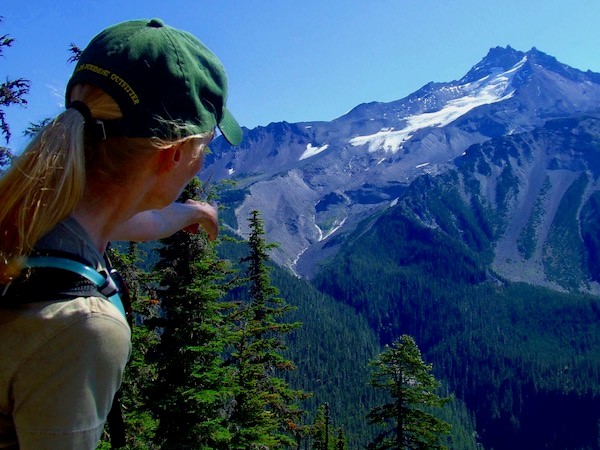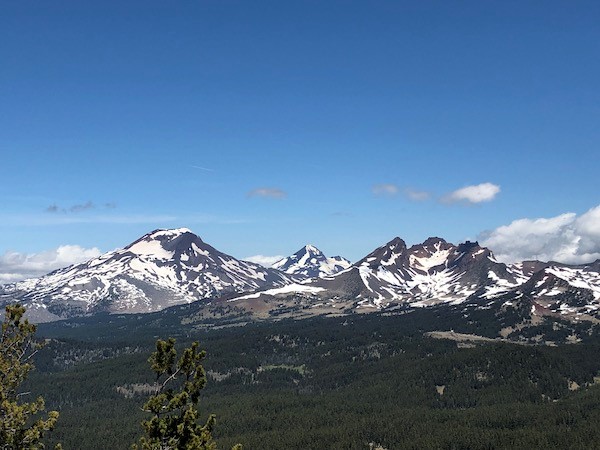My husband, Gary, and I climbed several mountains during his cancer years. He was on a treatment to slow down prostate cancer cell growth. One of the side effects was osteoporosis. So in our middle years, we laced up hiking boots and conquered the nearby Oregon Cascades.
And then we took on more mountain ranges. The highest elevation we ever reached was a trail ending at an icy-cold lake in the Colorado Rockies — 13,850 feet up.

I am now a cancer widow and my goal is to hike all the central Oregon trails that were our favorites. Alone. It’s part of my brave-making campaign. To practice being courageous.
Yesterday, I hiked up Tumalo Mountain. The trail, littered with rocks and tree roots smoothed by thousands of hiking boots, begins uphill through thick evergreen growth.
After several switchbacks in deep shade, the terrain opens out into volcanic ashy sand and a few wind-stressed trees. Here, the path continues its incline. But now through barren places. And barely any shade to speak of.
Yesterday’s trek reminded me of a mountain Gary and I climbed that took us thirteen years. The trail started out with a job lay-off. It steepened when we eventually sold our home and depleted our retirement investments.
Through the switchbacks, we picked up my mother and carried her as she was slipping into Alzheimer’s.
And then we came out into a steep, desolate terrain—a terminal cancer diagnosis—that almost did us in because we had already been climbing uphill for some time where the air was thin and the weight was heavy. And now there was no shade. Just ashy sand. And those few weather-beaten trees.

l to r: South Sister, Middle Sister, and Broken Top
On yesterday’s hike, after continuing through the barrenness, I began noticing brave wildflowers. Adding color and beauty in a place where you wouldn’t expect it.
Gary and I eventually discovered beauty and color in our own bleak place. We began sharing with other cancer survivors and caregivers best methods for uphill treks: Practicing gratitude. Getting plugged into community. Accepting love and support. Taking care of ourselves with rest, good nutrition, increased physical activity as allowed by the physicians. Giving back. Leaning deeper into our faith.
And then widowhood paid me a visit. Which meant the trail got steeper. But I was already conditioned for uphill climbing.
Here’s the thing about taking on steep trails: the sense of achievement and the views from the top—those views that represent not giving up on life—are so worth the struggle and discomfort.
My reward after yesterday’s uphill hike was looking north at the majesty of three distinct peaks in my ‘backyard’ of the Cascade Range.
One more mountain trail got checked off my list yesterday. But there is something of greater importance than checking trails off to-do lists. More than anything, I want our thirteen-year-long, uphill trek to matter.
This thought from Morgan Harper Nichols: “Tell the story of the mountain you climbed. Your words could become a page in someone else’s survival guide.” What if telling the story of our hard, steep, grueling places could be part of someone else’s survival? What if our stories could speak courage and hope into the lives of other people?
Marlys was the caregiver of her husband Gary who lived ten years after being diagnosed with late stage prostate cancer. After his diagnosis, together they founded a non-profit called Cancer Adventures, sharing their story with groups across the country. After Gary’s death in 2014, Marlys has continued to share the underlying theme of her and her husband’s story: How challenges are a part of life but you have choices. She has a passion for helping people navigate life’s challenges, having negotiated a few herself.